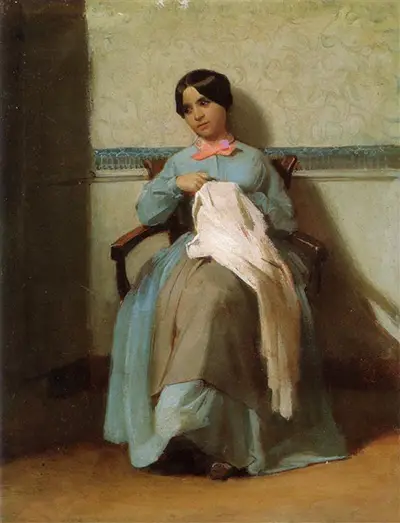 Buy Art Prints Now
Buy Art Prints Nowfrom Amazon
* As an Amazon Associate, and partner with Google Adsense and Ezoic, I earn from qualifying purchases.
William-Adolphe Bouguereau's Portrait of Leonine Bourguereau (1850) was painted early on in the frenchman's lucrative career. An artist of the mid-late neoclassical period, he was considered one of the greatest artists of his day.
Finding buyers from European boarders and beyond. Reaching the USA with his fame and percieved value.
His style was staunchly traditionalist allowing him commercial succsess, but many contempory artists, such as Edgar Degas, lashed out at Bourguereau for his reliance on "slick and artificial surfaces". Some even see Bourguereau as an artist that marked the beginning of the end for the great French Academy.
The Portrait of Leonie Bourguereau, though, was painted by William-Adolphe before his lengthy and well noted time at Academie Julian. It was a time in his life, still a young man, when he was certainly not short of work. Taking commissions for decorating houses and churches amongst classical portraits with a modern touch.
Here we have quite an unusual example of Bourguereau's work as for once his eye was distracted from depicting the naked female form within a classically biblical or mythical setting. Instead, we see a far more humble example of his work that could be easily mistaken for a Manet with it's unsmooth finish.
To understand Bourguereau, one must, of course, look at his early influences and education. His uncle is the stand out figure here who took him away from a career within the family business and instead taught him classical and biblical subjects. Surely a major reason why Bourguereau revisted these scenes time and time again.
Falling out of favour during the 1920s William-Adolphe Bourguereau has seen a revival in interests of his mostly staunchly traditional works. However, it is safe to say he enjoyed the height of his fame and appreciation for his artistry during his own life time and has not received as much interest or attention since, when compared to impressionists such as Monet or Renoir.
In the year that Bourguereau painted the Portrait of Leonie Bourguereau he also won the Prix de Rome, an annual bursary created by Louis XIV in 1663. His use of light and shade continue his photo-realistic style. Though why he decided to change scenes for this painting is something we may never know.




